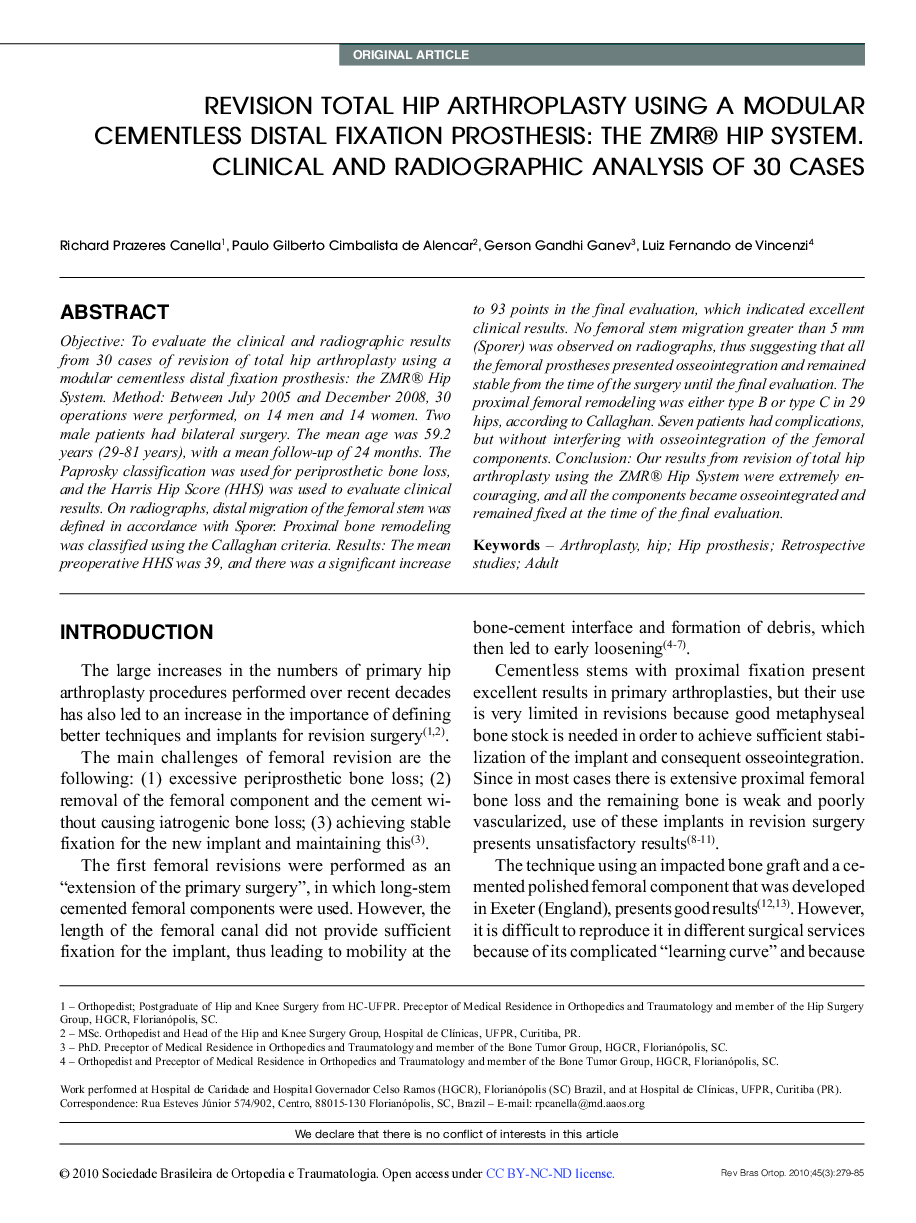| Article ID | Journal | Published Year | Pages | File Type |
|---|---|---|---|---|
| 2708742 | Revista Brasileira de Ortopedia (English Edition) | 2010 | 7 Pages |
ABSTRACTObjective: To evaluate the clinical and radiographic results from 30 cases of revision of total hip arthroplasty using a modular cementless distal fixation prosthesis: the ZMR® Hip System. Method: Between July 2005 and December 2008, 30 operations were performed, on 14 men and 14 women. Two male patients had bilateral surgery. The mean age was 59.2 years (29-81 years), with a mean follow-up of 24 months. The Paprosky classification was used for periprosthetic bone loss, and the Harris Hip Score (HHS) was used to evaluate clinical results. On radiographs, distal migration of the femoral stem was defined in accordance with Sporer. Proximal bone remodeling was classified using the Callaghan criteria. Results: The mean preoperative HHS was 39, and there was a significant increase to 93 points in the final evaluation, which indicated excellent clinical results. No femoral stem migration greater than 5 mm (Sporer) was observed on radiographs, thus suggesting that all the femoral prostheses presented osseointegration and remained stable from the time of the surgery until the final evaluation. The proximal femoral remodeling was either type B or type C in 29 hips, according to Callaghan. Seven patients had complications, but without interfering with osseointegration of the femoral components. Conclusion: Our results from revision of total hip arthroplasty using the ZMR® Hip System were extremely encouraging, and all the components became osseointegrated and remained fixed at the time of the final evaluation.
